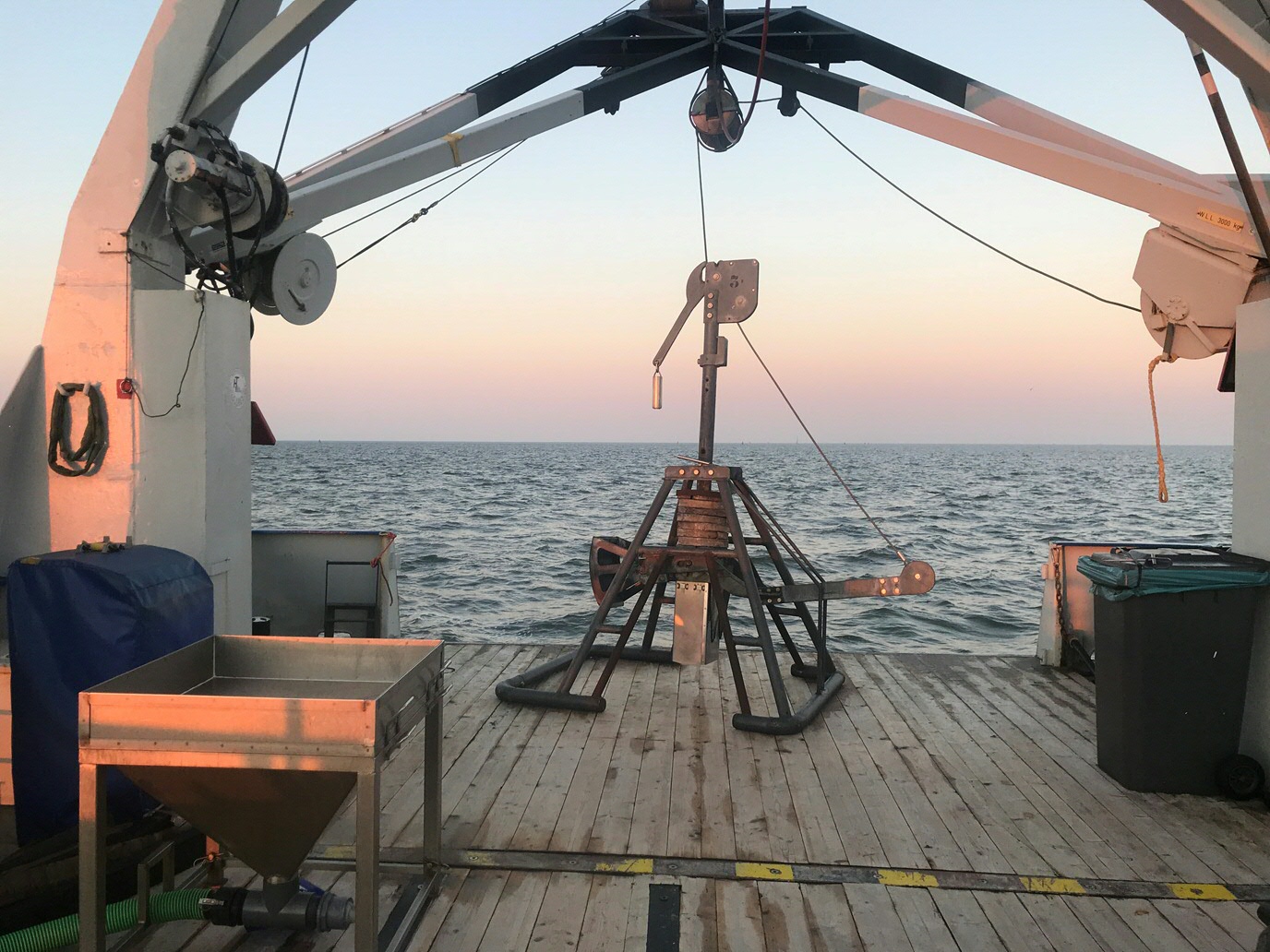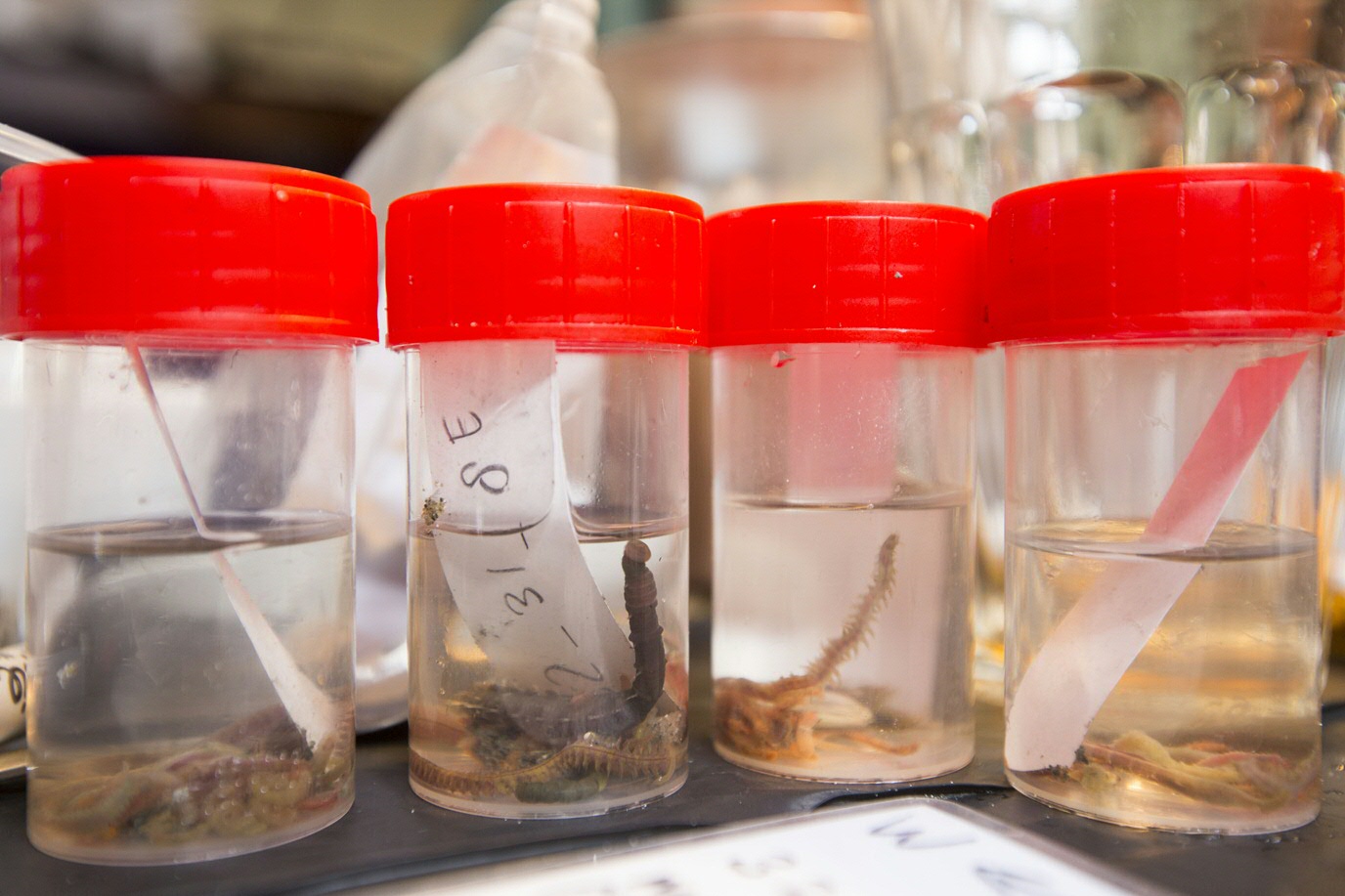Wadden Mosaic project starts underwater sampling
Today, the Wadden Mosaic project will start sampling the Wadden Sea soil below sea level. A total of 1,500 tiny ‘bites’ will be taken from the seabed. This the first time that the Wadden marine ecology is being mapped on this scale and so integrally. The sampling is part of a project initiated by nature preservation organization Natuurmonumenten, the NIOZ Royal Netherlands Institute for Sea Research and the University of Groningen (UG). In addition, the project will test ways to restore underwater life.
Today, the research vessel Navicula left the port of Texel for a sampling job of more than seven weeks, biting off small chunks of seabed all across the Wadden Sea. This type of sampling, also known as box-core sampling, is done from the ship and measures only 20 by 30 cm. In the meantime, a 3D scanner will scan the soil. All soil samples and the scan will be analysed on shore. The final result will be an overview of the marine landscape, the soil composition and the organisms that live in and on the soil.

Food web
The Wadden Mosaic project will also map the relationships between the plants and animals living in the Wadden Sea. Prof. Tjisse van der Heide: ‘We call these relationships the food web; they show which organism eats what. To determine this, we perform isotope research on the organisms in the soil samples by using the ratios between light and heavy versions of carbon and nitrogen, which act as building materials in these organisms. These ratios allow us to find out the organisms on which a particular animal feeds.’
Mapping the ecology in this World Heritage area
There is little data on the permanently submerged part of the Wadden Sea.This is the first time that the quality of the ecology in the underwater soil is being systematically mapped in one go. The ecology map that will be created will help in making choices regarding ecological recovery. The Wadden Sea is the only natural World Heritage Site in the Netherlands. However, the quality of its ecology is a cause for concern, especially that under water, where life should be richer and more diverse. The Wadden Mosaic project focuses on this marine life and is in line with the government’s efforts to restore the rich ecology of the Wadden Sea.The same three organisations (Natuurmonumenten, UG and NIOZ) previously carried out the Wadden Keys (Waddensleutels) project, which focused on the tidal flats and which the Wadden Academy assessed as very good afterwards.

Recovery measures
The other subprojects of the Wadden Mosaic project will test recovery measures in the Wadden Sea, in order to learn what works and what does not. These field experiments will be linked to academic research. For example, the Wadden Mosaic project will study how nature recovers after an area becomes off-limits to bottom fishing. In another experiment, the project will test how nature reacts to the restoration of solid structures, such as stones and shell-grit banks.
Shellfish banks and eelgrass
The Wadden Mosaic project will also conduct experiments on the recovery of shellfish banks and eelgrass fields. In the past, the Wadden Sea was filled with banks that were home to flat oysters, mussels and vast fields of tall eelgrass. The eelgrass covered approximately 150 square kilometres. Such underwater living structures provide space for other plants and animals to settle. Experiments will be used to test the possibilities for recovery in practice and to determine the key recovery factors.
Wadden Fund
The Wadden Mosaic project runs until 2022 and is part of the larger Wadden Tools programme. This programme tests measures concerning issues such as fish migration, the restoration of marine ecology and the position of the Wadden Sea as a ‘refuelling station’ and breeding habitat for birds. The Wadden Mosaic project is largely made possible by grants from the Wadden Fund and the Province of Groningen. Grant decisions by the Provinces of Noord-Holland and Fryslân are expected shortly. To avoid losing a full year’s worth of research, the first samples are already being taken.
More news
-
15 September 2025
Successful visit to the UG by Rector of Institut Teknologi Bandung
